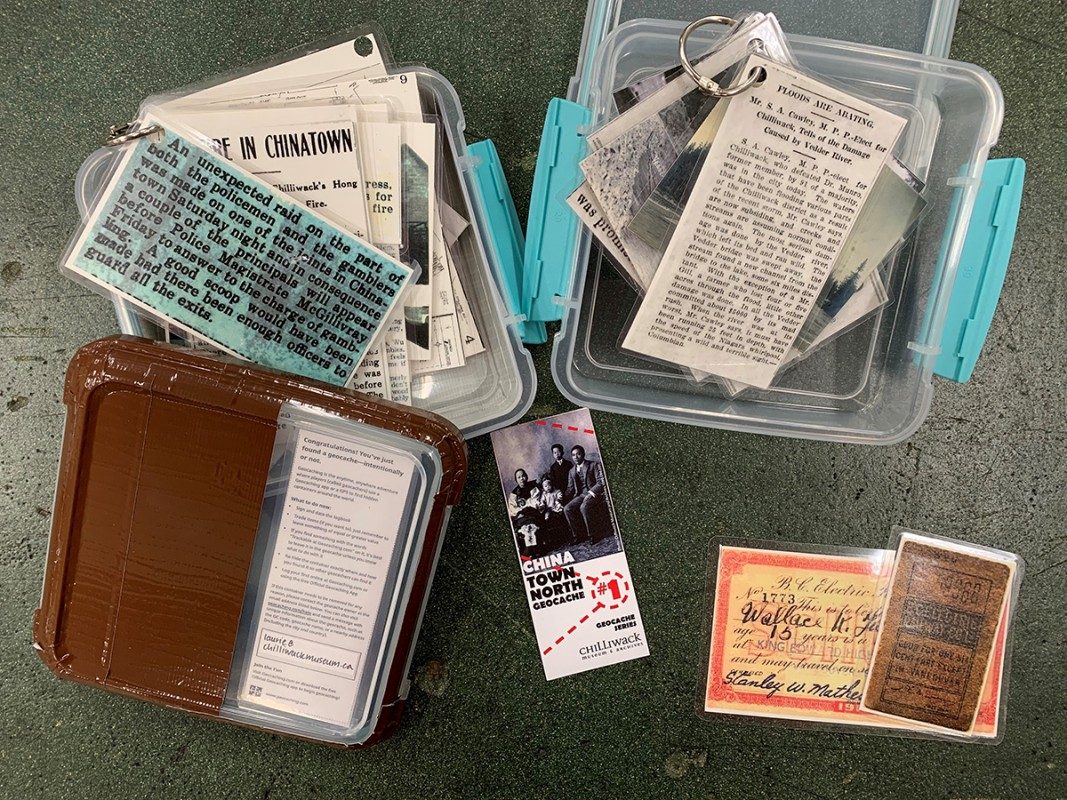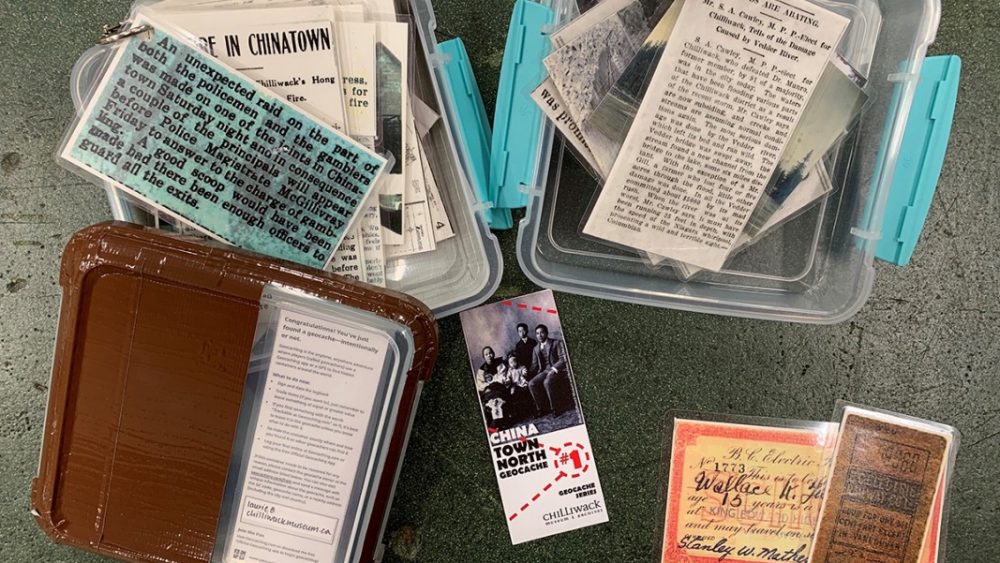Written by: Laureen Benton, Archives Technician
I love geocaching! Geo-what? I started geocaching about 17 years ago using an older handheld Global Position System (GPS) device, long before the ease of smart phones. I was at a heavily wooded park in Washington State, searching for a random box or container holding some unknown objects. It was illusive and exciting all at the same time. It was also tricky to trust this new GPS device with capabilities we were only just realising.
Geocaching uses latitude and longitude coordinates to search for a hidden treasure; basically an electronic scavenger hunt. The first cache was hidden by Dave Ulmer in the woods near Portland, Oregon with the location of said goodies found only by geographic coordinates and the rules being, “take some stuff, leave some stuff.” This first “stash” was found in May, 2000 and included a log book, pencil, videos, books, and a slingshot. Since then, there are now more than 3 million active geocaches worldwide with more than 600 million “found it” logs being recorded. Have a look at the first note to lead geocachers to their first treasure. https://groups.google.com/forum/?hl=en#!topic/sci.geo.satellite-nav/mchHczyzVHo
Within two years of inception, environmental initiatives developed to help preserve the natural area that the cache is found in by cleaning up litter, removing invasive species, planting trees etc. Not only does geocaching help explore our natural environment through discovery and adventure, but it also helps to learn about our community, locally and beyond.
The idea of placing a geocache in our community is to give residents an opportunity to go back in time to what their neighbourhood might have looked like. Did you know there was a Chinatown near Central Elementary school? There was!

Photo credit: Laureen Benton
We will be hiding a container near this historic area of Chinatown North and you will be able to find it with your smartphone through the “Geocaching” app or website, and will house a collection of newspaper articles, photographs and other interesting archival information about the neighbourhoods you live, work and play in. The idea is that we will have a series of caches around the community that collectively tell a few stories of Chilliwack and its inhabitants through the built environment, sporting culture and social life. Keep your eyes open for more geocaches popping up from the Chilliwack Museum and Archives, but also make sure you take part in finding some of the already hidden caches around our town. The people that have created and hidden these caches have taken time and energy to create some fun and adventure for children of all ages.
We hope that you enjoy this new outdoor learning opportunity created by the Chilliwack Museum and Archives. Remember that all the information found within must be placed back in the containers for others to enjoy, BUT the history inside can be researched further in the archives and seen at specific exhibitions at the museum. Keep your eyes and ears open for more chances to learn about mapping technology like GPS, maps and other historical geography. Check out the link for other opportunities to participate in some geocaching activities. https://www.geocaching.com/play


Comments are closed.